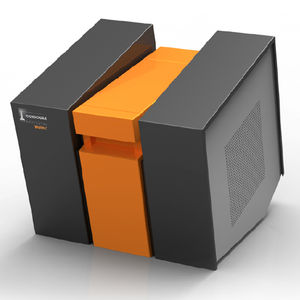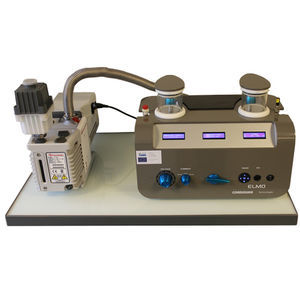
- Laboratory
- Laboratory medicine
- SEM microscope
- CORDOUAN Technologies
SEM microscope LVEM5TEMSTEMlaboratory
Add to favorites
Compare this product
Characteristics
- Type
- SEM, TEM, STEM
- Applications
- laboratory, for research
- Configuration
- benchtop, compact
- Other characteristics
- high-resolution
Description
The smallest TEM in the world…
The LVEM5 is a compact benchtop instrument that combines high resolution imaging with the small footprint of an optical microscope. It consists of four separate parts; the microscope, the electronics unit, the vacuum system, and the PC. Small footprint, no need for a dark room, no cooling water, easy service… all this makes the instrument a multi-purpose personal or in-group electron microscope.
High contrast
The LVEM5 is a unique investigation tool that allows observation of objects composed of light elements with high contrast without using heavy metal staining and shadowing.
A wide choice of imaging modes
The LVEM5 is the smallest commercial transmission electron microscope in the world, and features all the standard imaging modes that can be found in conventional TEMs and more. The LVEM5 can work in transmission (TEM – Transmission Electron Microscope) or diffraction (SAED – Selected Area Electron Diffraction) modes as well as in scanning modes (STEM– Scanning Transmission Electron Microscope and SEM – Scanning Electron Microscope avec BSE – Backscattered Electrons) with nanometer spatial resolution.
Components
The electron gun uses a Schottky field emitter which provides high brightness and coherence with a lifetime of several thousand hours. The high brightness and small virtual source of the electron gun allows transmission and scanning modes.
Permanent magnet lenses, an electrostatic lens and electrostatic stigmators and defl ectors are used in the electron optics. Permanent magnet lenses are very stable and do not need any cooling.
Catalogs
LVEM5 Electron Microscope
6 Pages
*Prices are pre-tax. They exclude delivery charges and customs duties and do not include additional charges for installation or activation options. Prices are indicative only and may vary by country, with changes to the cost of raw materials and exchange rates.










